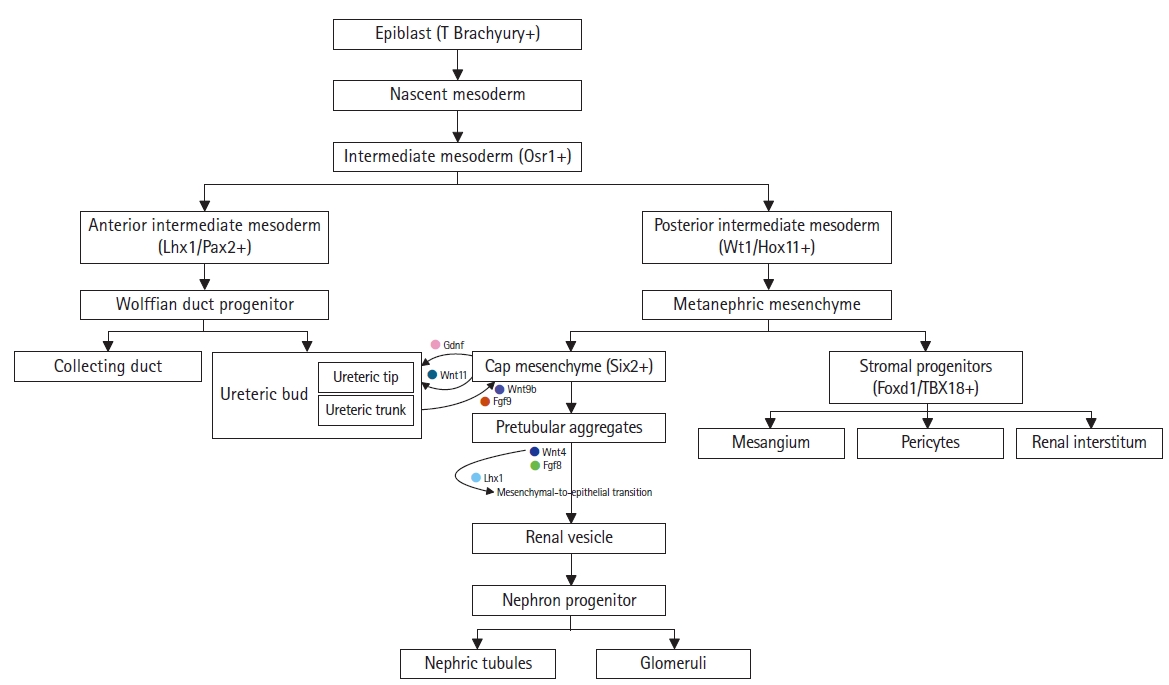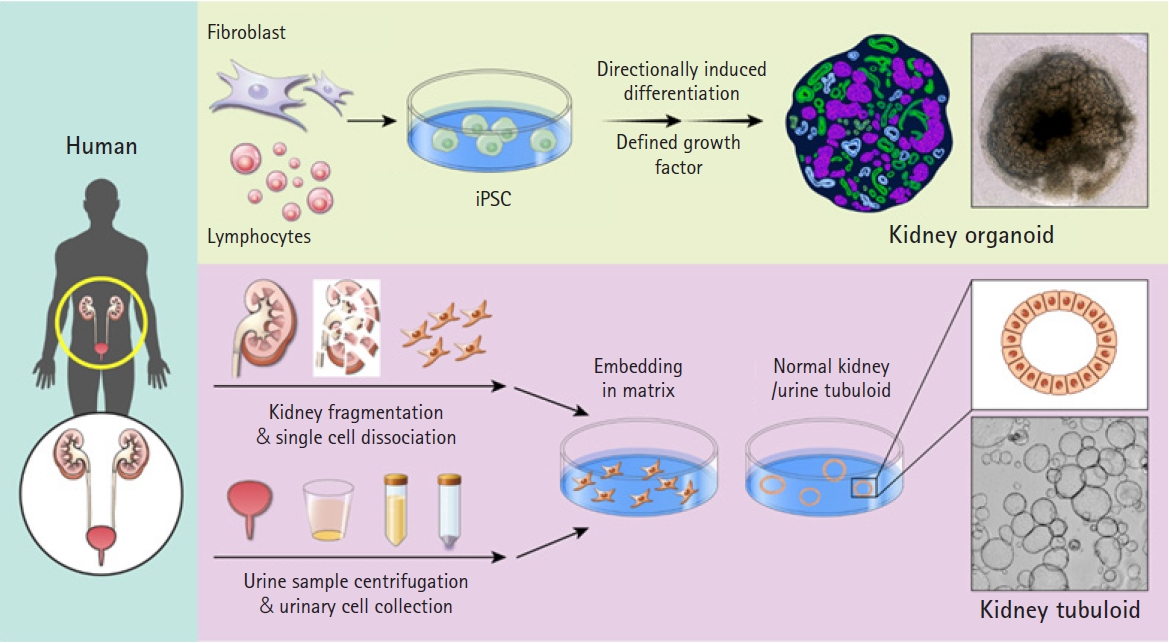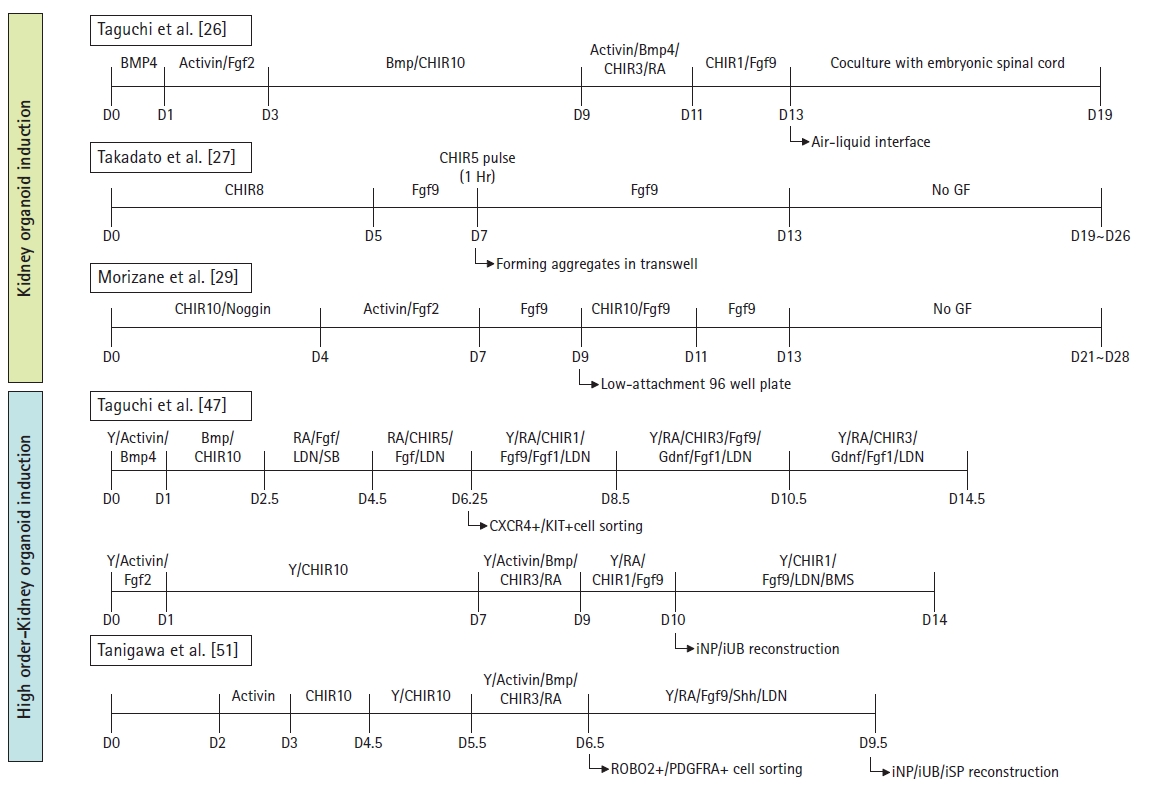5. Tsang TE, Shawlot W, Kinder SJ, Kobayashi A, Kwan KM, Schughart K, et al. Lim1 activity is required for intermediate mesoderm differentiation in the mouse embryo. Dev Biol 2000;223:77-90.


9. Carroll TJ, Park JS, Hayashi S, Majumdar A, McMahon AP. Wnt9b plays a central role in the regulation of mesenchymal to epithelial transitions underlying organogenesis of the mammalian urogenital system. Dev Cell 2005;9:283-92.


10. Little M, Georgas K, Pennisi D, Wilkinson L. Kidney development: two tales of tubulogenesis. Curr Top Dev Biol 2010;90:193-229.

13. Bohnenpoll T, Bettenhausen E, Weiss AC, Foik AB, Trowe MO, Blank P, et al. Tbx18 expression demarcates multipotent precursor populations in the developing urogenital system but is exclusively required within the ureteric mesenchymal lineage to suppress a renal stromal fate. Dev Biol 2013;380:25-36.


22. Narayanan K, Schumacher KM, Tasnim F, Kandasamy K, Schumacher A, Ni M, et al. Human embryonic stem cells differentiate into functional renal proximal tubular-like cells. Kidney Int 2013;83:593-603.


26. Taguchi A, Kaku Y, Ohmori T, Sharmin S, Ogawa M, Sasaki H, et al. Redefining the in vivo origin of metanephric nephron progenitors enables generation of complex kidney structures from pluripotent stem cells. Cell Stem Cell 2014;14:53-67.


28. Lam AQ, Freedman BS, Morizane R, Lerou PH, Valerius MT, Bonventre JV. Rapid and efficient differentiation of human pluripotent stem cells into intermediate mesoderm that forms tubules expressing kidney proximal tubular markers. J Am Soc Nephrol 2014;25:1211-25.


30. Sharmin S, Taguchi A, Kaku Y, Yoshimura Y, Ohmori T, Sakuma T, et al. Human induced pluripotent stem cell-derived podocytes mature into vascularized glomeruli upon experimental transplantation. J Am Soc Nephrol 2016;27:1778-91.


31. Schell C, Wanner N, Huber TB. Glomerular development: shaping the multi-cellular filtration unit. Semin Cell Dev Biol 2014;36:39-49.


40. Mae SI, Ryosaka M, Sakamoto S, Matsuse K, Nozaki A, Igami M, et al. Expansion of human iPSC-derived ureteric bud organoids with repeated branching potential. Cell Rep 2020;32:107963.


44. Ungricht R, Guibbal L, Lasbennes MC, Orsini V, Beibel M, Waldt A, et al. Genome-wide screening in human kidney organoids identifies developmental and disease-related aspects of nephrogenesis. Cell Stem Cell 2022;29:160-75.


47. Taguchi A, Nishinakamura R. Higher-order kidney organogenesis from pluripotent stem cells. Cell Stem Cell 2017;21:730-46.


54. Schutgens F, Rookmaaker M, Verhaar M. A perspective on a urine-derived kidney tubuloid biobank from patients with hereditary tubulopathies. Tissue Eng Part C Methods 2021;27:177-82.


59. Shimizu T, Mae SI, Araoka T, Okita K, Hotta A, Yamagata K, et al. A novel ADPKD model using kidney organoids derived from disease-specific human iPSCs. Biochem Biophys Res Commun 2020;529:1186-94.


62. Bajaj P, Rodrigues AD, Steppan CM, Engle SJ, Mathialagan S, Schroeter T. Human pluripotent stem cell-derived kidney model for nephrotoxicity studies. Drug Metab Dispos 2018;46:1703-11.


63. Huang JX, Kaeslin G, Ranall MV, Blaskovich MA, Becker B, Butler MS, et al. Evaluation of biomarkers for in vitro prediction of drug-induced nephrotoxicity: comparison of HK-2, immortalized human proximal tubule epithelial, and primary cultures of human proximal tubular cells. Pharmacol Res Perspect 2015;3:e00148.
















 PDF Links
PDF Links PubReader
PubReader ePub Link
ePub Link Full text via DOI
Full text via DOI Download Citation
Download Citation Print
Print



